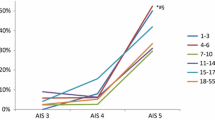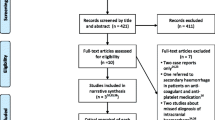Summary
To provide a picture of contemporary practice, a survey was carried out of severely and moderately head injured patients admitted to 67 `neuro' centres in 12 European countries. 1,005 adult head injuries were recruited over a three month period. Sixty items of information on demography, clinical features, investigations, management and early complications were captured on a simple, two-page questionnaire and, information on outcome at six months on a third page.
The median age of the subjects was 38 years, 74% were male and 51% injured in road traffic accidents; 57% of patients were transferred to the `neuro' centre from another hospital. Assessment of clinical responsiveness was limited by the use of sedation and intubation and information from four early time points (pre-hospital, arrival at the Accident and Emergency department, post-resuscitation, and arrival at the `neuro' unit) was combined to stratify the subjects as severe (58%), moderate (17%) or intermediate (19%). In 48% of patients classified the CT scan showed features of a `mass lesion' and in 40% showed a subarachnoid haemorrhage. Fifty-five centres provided the data on outcome for 94% of the cases recruited in these centres six months after injury. 31% died, 3% were vegetative, 16% severely disabled, 20% moderately disabled and 31% had made a good recovery. Comparison of the data from different parts of Europe showed differences in the frequency of secondary transfer, cause of injury, occurrence of major extracranial injury, CT scan findings, intracranial operation, clinical severity of injury and utilisation of the components of intensive care and the occurrence of a favourable outcome, although the latter difference was not statistically significant when variations in the initial severity of injury were taken into account.
The findings in the present survey are compared with newly analysed information for three previous large series: the International Data Bank involving the UK, the Netherlands and the USA, the North American Traumatic Coma Data Bank, and data from four centres in the UK. The comparisons showed substantial similarities and also differences that may reflect variations in policy for admission of the head injury to `neuro' units, and evolution in methods of assessment, investigation and management. The effects of these differences on outcome requires further, rigorous prospective study.
Similar content being viewed by others
Author information
Authors and Affiliations
Consortia
Rights and permissions
About this article
Cite this article
Murray, G., Teasdale, G., Braakman, R. et al. The European Brain Injury Consortium Survey of Head Injuries. Acta Neurochir (Wien) 141, 223–236 (1999). https://doi.org/10.1007/s007010050292
Issue Date:
DOI: https://doi.org/10.1007/s007010050292




